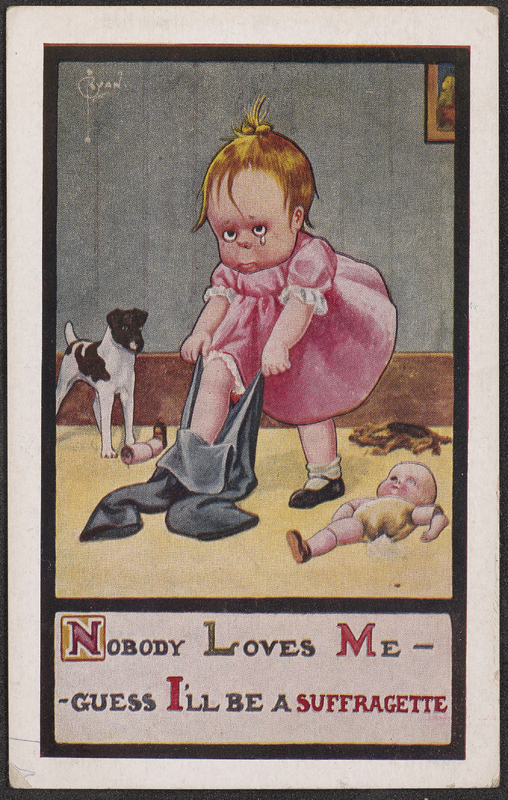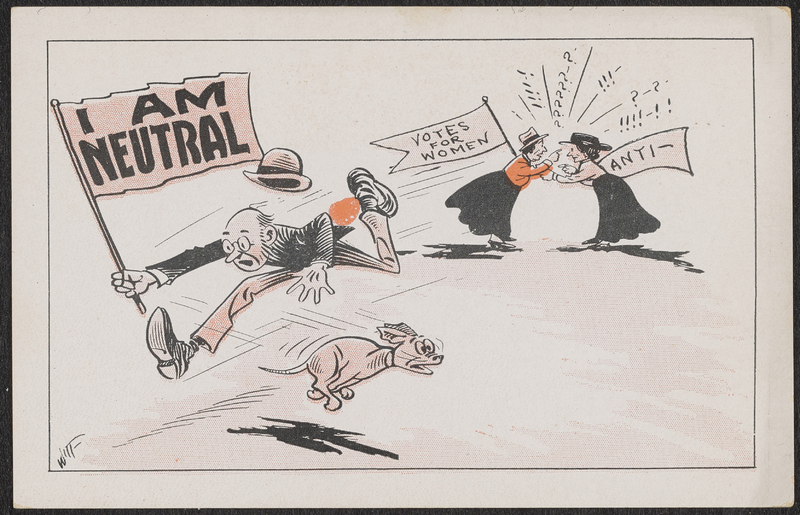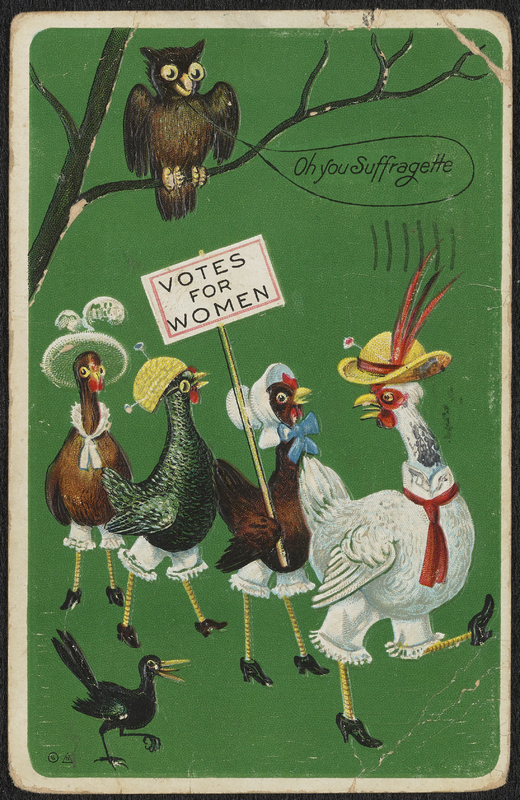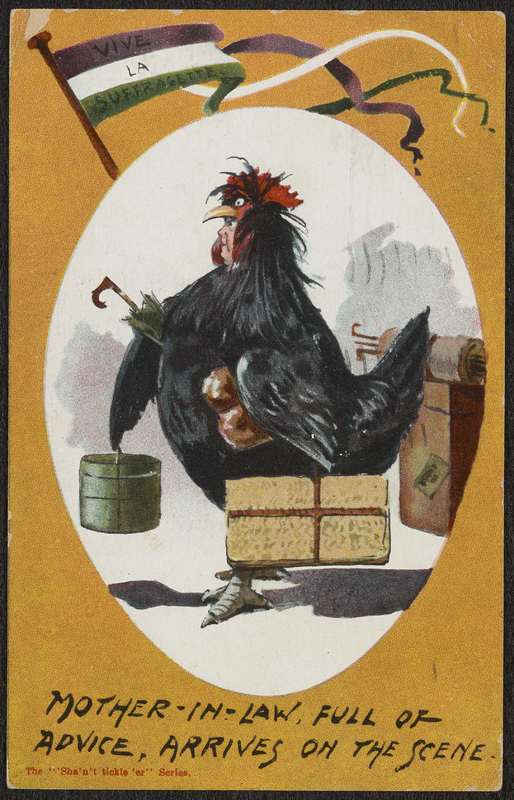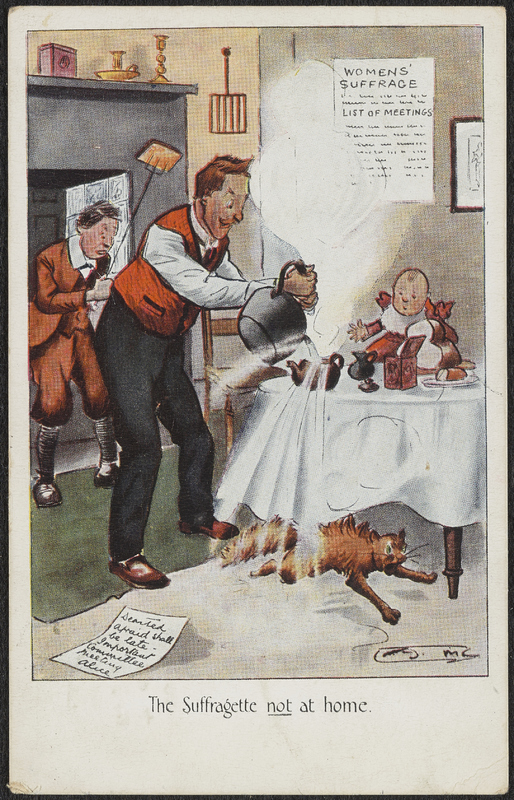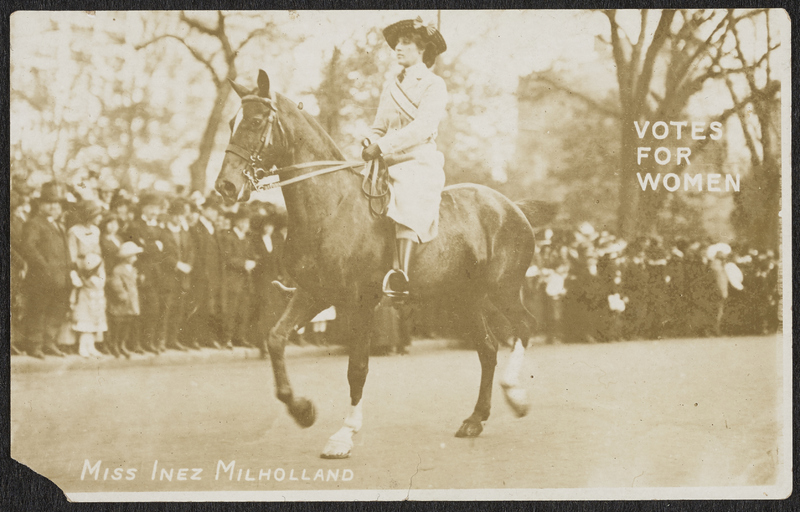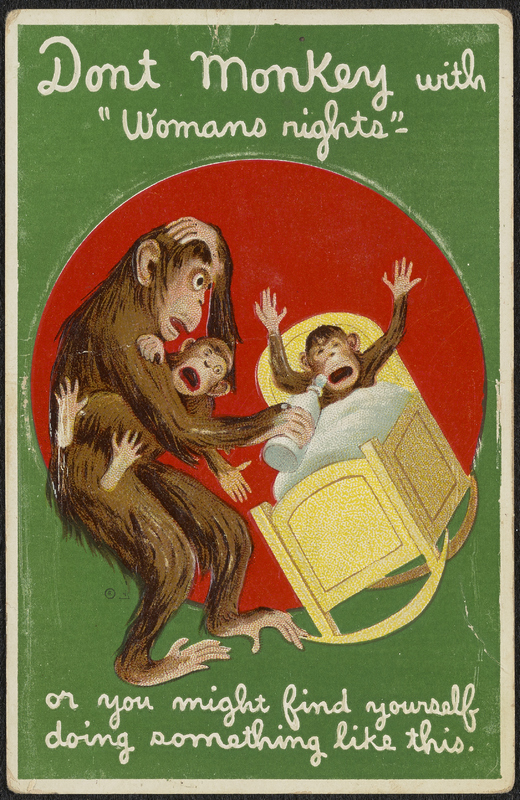Animals
Once the first postcard was issued by the U.S. government in 1872, the advertising game changed for both pro- and anti-suffrage supporters. Soon pictures supporting both causes began to appear in mass circulation on the backs of postcards, either for the purpose of collection or as a political statement to glance at while sending notes to friends and family. One of the main ways both pro- and anti-suffrage supporters relayed their messages on these postcards was by featuring animals, with the anti-suffragist postcards representing women as passive, “feminine” cats and men as physically active, “masculine” dogs. The suffragists often took it upon themselves to reclaim the image of the cat and other negative depictions of women as animals, or used other animals in their propaganda. This selection of postcards highlights the way that even domestic pets were pulled into the question of suffrage.
Charlotte Kim, curator
